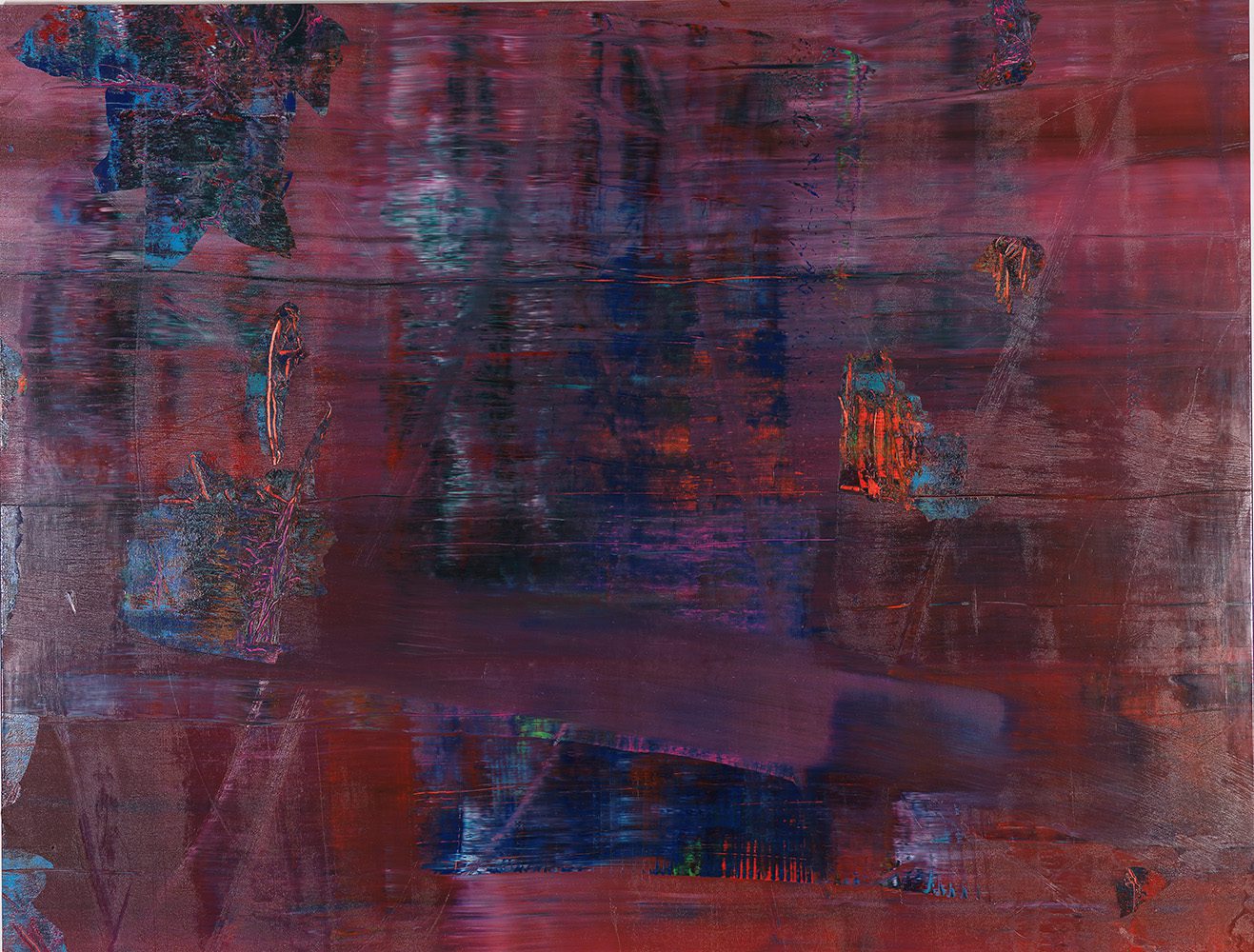Gerhard Richter’s work is anchored at the heart of the conceptual and critical discourse of contemporary painting. From the outset of his career in Dresden in the 1950s, he simultaneously developed ostensibly contradictory modes of painting: painting based on a photographic image which is projected onto the canvas, traced, and subsequently blurred, along with abstract painting involving a process of adding and subtracting layers of pigment. Through these options Richter seems to formulate the rudiments of his view of the practice of painting while indicating both the affinity and the discrepancy between reality and its elusive representation, between what is seen and the subjective gaze.
Abstract Painting illustrates the unique method developed by Richter. He constructed the painting gradually, alternately applying layers of vivid paint and then spreading and scraping them off with a squeegee, leaving the traces of his actions on the canvas. In each phase he examines the outcome of his act – the color palette, the patterns, the rhythm, and the reflective effects – which guides him towards the moment of conclusion. Through this repetitive, quasi-mechanical process of covering and uncovering, finalization and destruction of the painterly surface, his abstract paintings are like waves – visionary subcutaneous spaces in fluid transformation.
Richter reserved a key role for the element of contingency in the process of creation: “This method of working with randomness, chance, sudden inspiration, and destruction lets a particular type of picture emerge but never a predetermined one. The individual picture should therefore develop out of a painterly or visual logic which happens out of necessity. And by not planning the result I hope to be able to realize rather a correctness and objectivity which any piece of nature (or a ready-made) always possesses. Surely this is also a method to put into action unconscious efforts, as much as possible.”
Referring to “chance” as a vehicle harnessed in the service of the artist, Richter elaborates on the concept developed by the Dadaists and Surrealists in the early twentieth century, revalidating it. He proposes a different view of a painterly reality that goes beyond appearances – whether as a defiant Dadaist device intended to undermine artistic conventions or as a method of “psychic automatism” facilitating exposure of the unconscious.
Tamar Manor-Friedman



